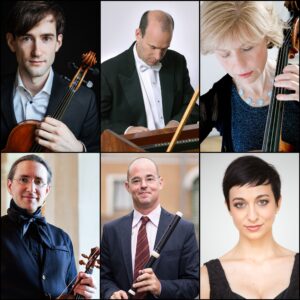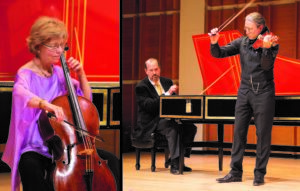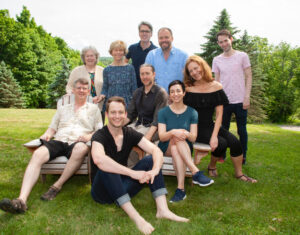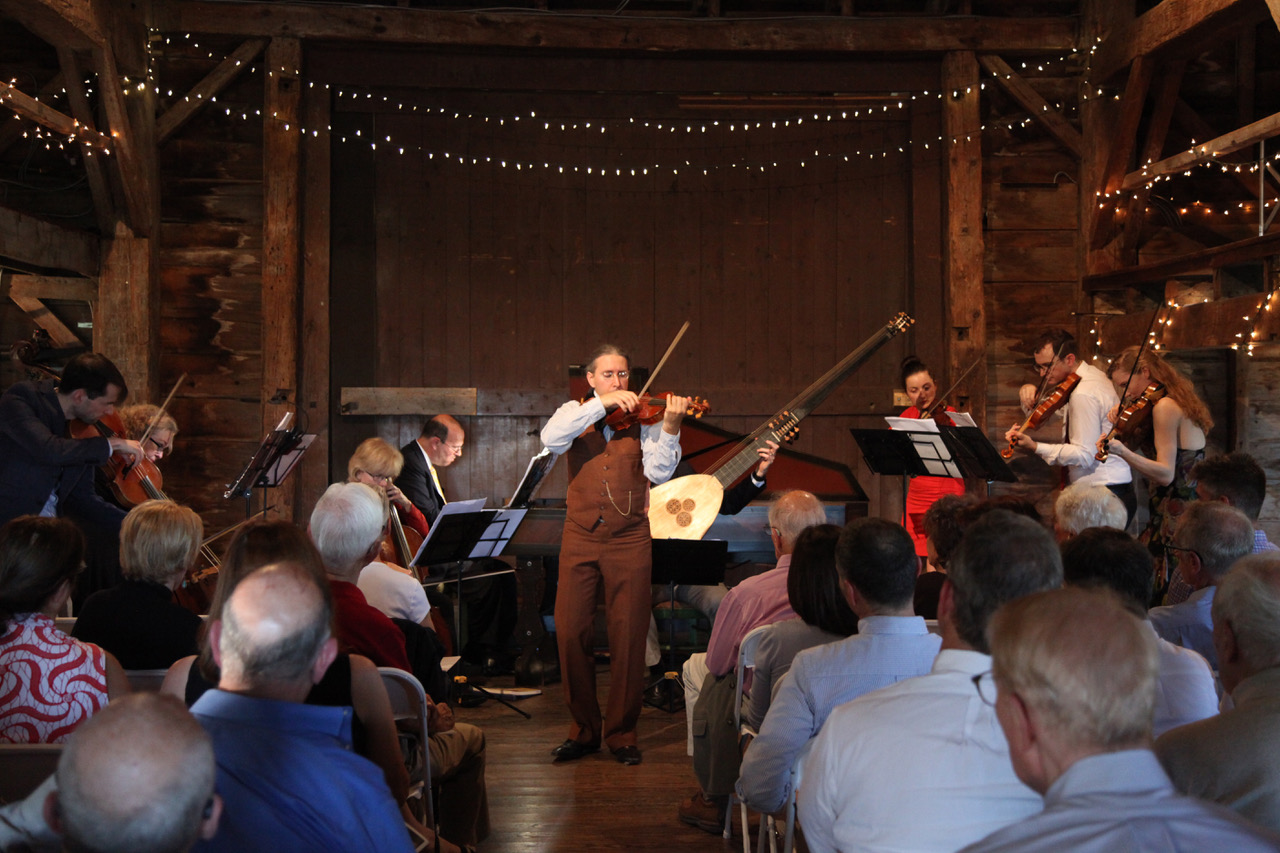Never at a lack for manifold entertainment, the Hudson Valley has been quietly serving up some of the best early music in the nation through the Four Nations Ensemble, who are leading players of period instrument and vocal performance. Since 1986, this core group, including a soprano, harpsichord or fortepiano, violin, flute, and cello, plays a repertory from the Renaissance through the Viennese Classical masterpieces of Haydn, Mozart and Beethoven.
Most well known in the Hudson Valley for their annual concert series, the ensemble also plays to audiences across the U.S. and around the world. Live performances of the group’s music include Corelli La Follia; Vivaldi flute concerto; Pergolesi Orfeo Cantata for soprano and strings. Just now they are gearing up for their fall 2021 performances that are part of the Harvest Series that starts this month.
“The roots of the ensemble go back to my days at Juilliard,” said Andrew Appel, harpsichord, fortepiano and artistic director. “My teacher, Albert Fuller, put me in touch with a violinist, Ryan Brown; and then we added Loretta Sullivan, a cellist, and Christa Feeney, a concert master of Mostly Mozart.” Today the group consists of Pascale Beaudin, soprano; Olivier Brault, violin; Charles Brink, traverso; Kyle Miller, viola; Loretta O’ Sullivan, cello and invited guest soloists.

When asked about finding similarly minded musicians, Appel explained, if you are dedicated to this music, you have to find other people who are similarly passionate, enthused and committed to exploring and navigating and make the music speak and give it life and meaning. Chamber musicians work together and develop a rapport and respect for each other as they are working so closely together not only playing the music but also programming their selections.
In addition to “family,” Appel used another analogy to describe their work – “we are a bunch of explorers on a ship” and we have so many themes that we can delve into from court music once played in Versailles and Beijing to old style fiddling. A chamber music ensemble is a machine of creativity, and we enrich each other while playing, even when we are performing as soloists. Some of us have been playing together since 1984 and we haven’t stopped. We travel together, been to each other’s weddings and watch children being born and getting married. These profound connections support us to have powerful realizations of who we are and what we can do as professional musicians.
When performing in the Hudson Valley, the group mostly performs in private homes and barns. Over the past 26 years, they have built supportive, sophisticated and musically savvy audiences through word of mouth alone. Before the pandemic, the Four Nations traveled around the U.S. and internationally performing in Detroit, Vienna and South America. They hold two series of three concerts each year in New York City and Columbia County and have participated in education residencies in Texas, Minnesota, Wilkes Barrie and Gettysburg, Pennsylvania and Columbia County.

Four Nations’ performances are educational as well as entertaining. On their website, you can find what they call the Concise Dictionary of Music which are recorded performances along with program notes and a visual program of art from the 18th century. These are a sort of musical journals in the style of the original magazines created in the 18th century by publishers. In the spirit of this tradition, Four Nations has built an online YouTube magazine of performances with wonderful examples of their work and of early music: Couperin Second suite from Book one for harpsichord; the Bach Sonata for Violin and Harpsichord; the Boismortier sonata for cello and continuo; and the Bach Sonata for flute and harpsichord in B minor.
In answer to the question about the general popularity of early music, Appel said, “Louis the XIV has nothing on the Hudson Valley.” Fifty years ago, the focus of early music was found on college campuses and mostly played by amateurs – passionate amateurs. Now however, the high professional level has developed and early music is populated by “extraordinary talent.” Appel explained that he started harpsichord at 15 but today children are starting at 7 and 8 and making their debuts at 10 and 11 and are already brilliant prodigies on old instruments. “This is very exciting for someone my age,” Appel said, “to hear so many professionals playing so beautifully on old oboes and gut strings – we have a well-stocked population of early musicians.

Yes, in fact, there is a lot of early music happening across the U.S. Most major schools now have an early music division. Appel explained that in America it all started with Wanda Landowska and she inspired so many contemporary composers who wrote for the harpsichord. Now there are tens of thousands of modern harpsichord pieces. Since 1955, early music has been growing and growing. Also in Europe, the early music scene is enormous. William (Bill) Christie in Paris is another reason why Baroque music and early opera has taken off. “Christie is so famous that when people see him on the Champs Elysees, they stand up and applaud.”
It is fortunate for the Hudson Valley that Four Nations found its home here so close to New York and yet far removed from the hustle and bustle of competing responsibilities that split time and attention. Four Nations has been enriching the Hudson Valley with its music, professionalism and its outreach to the local community. The Friends of Four Nations is a support group that they formed some time ago and tickets are available for the Harvest Concert Series.
Clearly Appel and the Four Nations Ensemble were at the cutting edge of early music when they started their group in 1986. Now it seems they are part of a popular stream that has become a wave of early music in America.
By Victoria Larson, Editor, Side of Culture
VK Larson Communications

